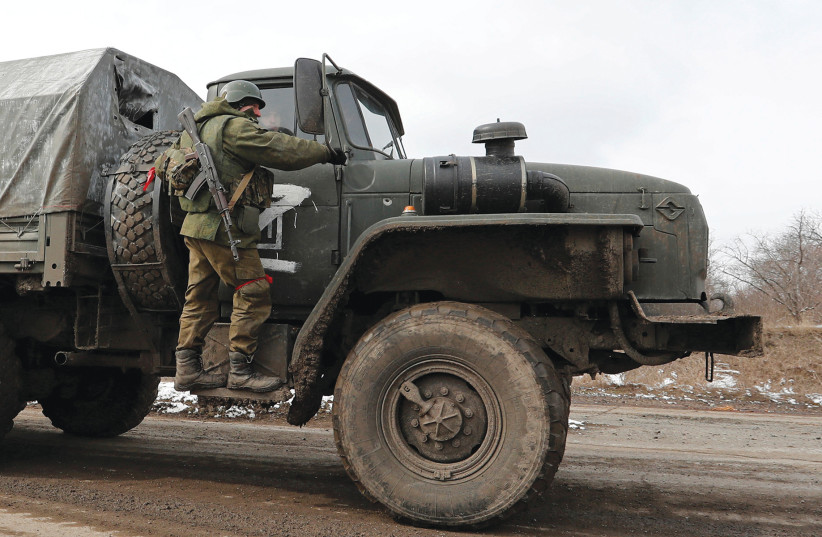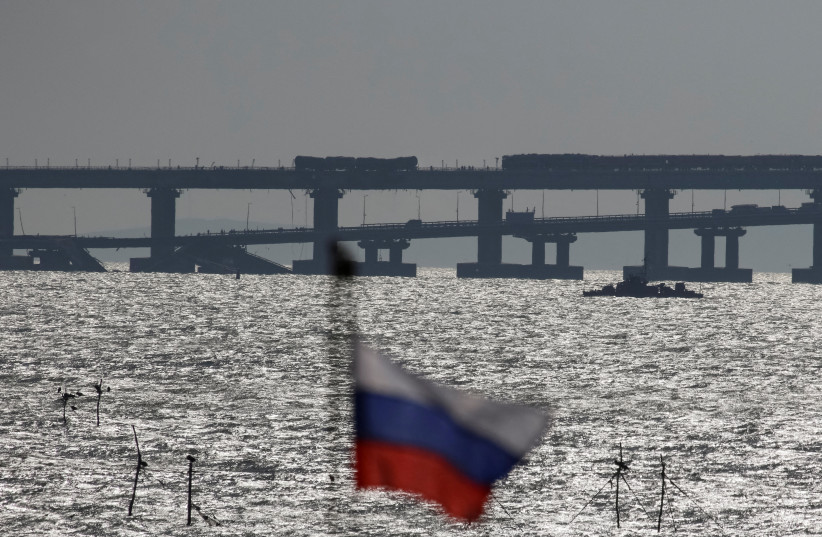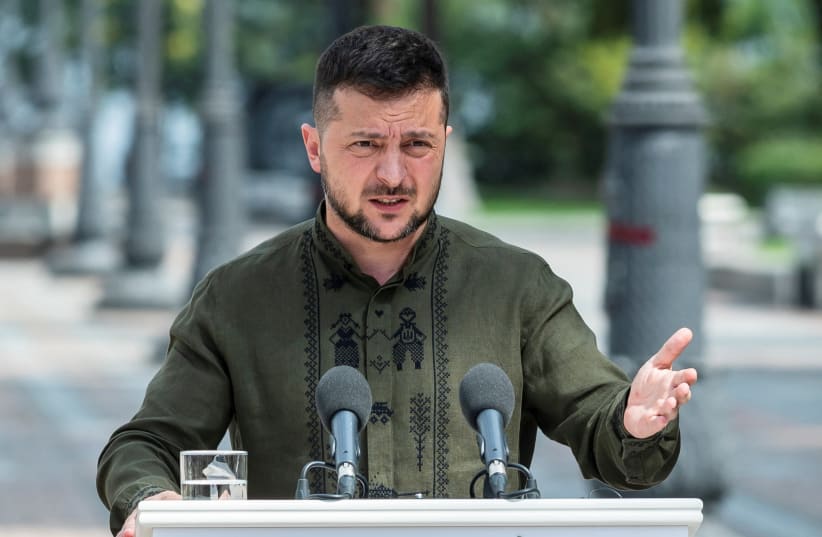A year of war in Ukraine has brought tremendous suffering to Ukrainians but has also inspired people throughout the West, showing that supporting a democracy being invaded by an authoritarian power can become a rallying cry for democracies around the world. This is a unique time in history, because the general trend over the last decades has been the erosion of democracy. Ukraine has become a symbol of a broader struggle.
It’s not entirely clear why Ukraine, at that moment in early 2022, became such a symbol and why it was successful in withstanding the Russian invasion. For instance, back in 2014, Russia also invaded Ukraine and then annexed Crimea and set up two breakaway separatist areas in eastern Ukraine, called Donetsk and Luhansk.
Back in 2017, I went to the frontline in Marinka facing the separatists who were backed by the Russians. At the time the Ukrainians were constantly clashing along hundreds of kilometers of the frontline with the Russian-backed fighters. However, we had no sense at the time that the democratic world was there to support the front.
While the West was supporting Ukraine, it wasn’t a rallying cry. In fact, sometimes Ukraine was seen as controversial and became inserted into US politics during the Trump years.

In addition, other conflicts didn’t get the same rallying cry as Ukraine. When Russia invaded Georgia in 2008, the world had shrugged. When Russia backed the Syrian regime, most people shrugged. When Turkey invaded Afrin in Syria, no one seemed to notice. When the Iranian-backed government of Baghdad attacked Kurds after a referendum, they were left to fight on their own. When Kabul fell, many people were shocked, but quietly relieved the war was ostensibly over.
That brings us to a key question. What is different in Ukraine? What is different this time? The lessons of the war in Ukraine can help us understand what makes democracies strong and able to resist. It can also help us understand how authoritarian regimes might be rolled back, as opposed to appeased.
A leader who doesn’t leave
The key face of Ukraine’s resistance over the last year has been Volodymyr Zelensky. What makes him unique is that he has been able to articulate Ukraine’s resistance to the world, in a way that appears authentic and in a way that hasn’t involved jetting around the world begging for help. Instead, his steadfast resistance, his choice to remain in Kyiv and his adoption of a kind of style of clothing that reminds us of authentic resistance, has brought him support.
Zelensky channels some of the sense for history that links him with those greats, like Winston Churchill or others, who were steadfast in defending their countries from authoritarians. In his attire he also conjures up something unique, the idea of the common soldier remaining to defend his land from invasion. These qualities are complex and it’s not clear if a different time would have enabled a leader to adopt them. In 2014 when Ukraine was invaded the Russians didn’t try to take Kyiv. However, in 2022 their goal was Kyiv and it’s clear that the Ukrainian leader chose to remain, rather than go to Lviv to carry on the war, a choice that might have been disastrous. This is a huge contrast with Ashraf Ghani, who might have given good speeches to western audiences, but did not inspire his people to stand and fight the Taliban. He fled and this has led to disaster for Afghanistan’s people.
A united West
A key to the support of Ukraine has been the unity of the West and democracies. Almost all western countries have rallied behind Ukraine. This is in contrast to the past when some countries chose independent policies on various issues. What this means is that some countries that were previously thought of as neutral, have gotten on board to back Kyiv. In addition, Germany and France have been deeply supportive. This is in contrast to the past when France sometimes was suspicious of US policy goals or causes that were part of a broader US-UK consensus. In addition, Germany had new leadership in 2022. Angela Merkel, who had a problematic track record of appeasing authoritarians, had left office.
Ukraine has become a rallying cry for many democracies who see the invasion as a red line. They believe this has harmed the international rule of law. Russia had already violated these principles when it invaded and annexed Crimea, but the invasion of 2022 was seen very differently. It appears many western countries were waiting for a cause like this, a kind of red line, that they could finally throw down the gauntlet on. Ukraine provided the cause.
Sending arms
Western countries often have a divided between the policies of their foreign ministries and their defense ministries. In the US this is expressed by the differences between the Department of State and the Pentagon. For instance, in the Syria conflict, the US pursued sometimes conflicting goals. US Central Command backed the SDF, but at times key US diplomats appeared to also seek to distance the US from the SDF and eastern Syria and preferred to work with Turkey. This means that the US has often had problems during the global war on terror since 9/11 with the military pursuing narrow goals and not always coordinating well with bigger goals.
This kind of policy disconnect means that in the West it was common for countries to put out statements condemning things, but not do anything. For instance, that is how China was able to build bases on small atolls in the South China Sea.

Russia believed the West was weak and divided and wouldn’t do anything more than put out virtue-signaling statements. Russia was wrong.
The decision to arm Ukraine is a key part of the reason Ukraine has maintained its resistance. The West has rallied and shifted procurement to help Ukraine as fast as possible. This is a big contract with decades of western policies that have often starved some partners of arms. For instance, South Vietnam didn’t have the re-supply it needed to resist in 1976. Other key partners have not always received the weapons they wanted, or in the quantities they need. Support for Ukraine appears to have shifted this policy.
Strong defenses and a Russian paper tiger
Russia has proven itself to be much weaker than it appeared on paper. This is a lesson from the war. Sometimes authoritarian regimes look strong but they may be weak internally. China also appears strong, but is its army, navy and air force as strong as it appears? These are key questions.
Western systems generally have proven themselves very effective in Ukraine. Ukrainians have also shown that willingness to stand up against the Russians has poked a huge hole in the myth of Moscow’s abilities. This has come at enormous expense for both sides. Nevertheless, the combination of Ukraine’s willingness to resist and rally, and Russia’s apparent feet of clay, provides a lesson for future confrontations.
Ideals are better than theories
One last lesson of the war is that theories of international relations generally are hollow when it comes to dealing with reality. The “realists” and others who predicted the US could “engage” with Russia and Iran have been proven wrong.
Russia was never going to do a “reset” with the West, and encouraging trade via pipelines like Nord Stream didn’t moderate Russia. The Ukraine war has shown that idealism, such as backing democracies, is better than the cynical theorists who always believe authoritarians can be trusted.
